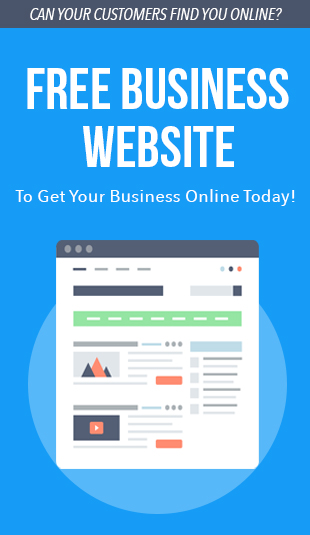You love your website but are you sure your visitors love it too?
When building a site that your customers will trust and love, you need to focus on two things: human psychology and testing.
To make more online sales, it is vital to learn more about your audience and find out how they use your site. While knowing the best practices is a great way to improve your site’s design, you should always rely on testing, as it is the only way you can get better results and increase your sales.
So, let’s go over the 9 major design mistakes that a lot of website owners make and discover how you can start converting your website visitors into customers:
- Confusing Website Navigation
Have you ever visited a website but found it confusing and didn’t know where to click to find the information you were looking for? It’s annoying, right? If your site’s navigation is chaotic, the chances are your customers will have a hard time finding what they’re looking for in a few clicks. In other words, you can lose a sale in a matter of seconds.
Your site’s navigation should be clear and logical to make it easier for users to find their way around easily. Don’t try and be smart by re-inventing the wheel because, while you’re trying to be innovative and different, it will hurt your sales as it only creates confusion.
For example, if you’re using hyperlinks, make them stand out from the body of the text. If they are hidden to blend in with the rest of the text your visitors won’t know to click them.
Make sure you organize and structure your navigation to match the theme of your site. A personal site can afford to get a bit more creative and different but a business or ecommerce site needs to be clear and logical.
Remember that in most cases, if your visitor can’t find what they’re looking for in less than 3 clicks, chances are they’ll leave the site very quickly.
- Grrrrr ….Where’s the Search Bar?
You don’t want to frustrate or annoy your visitors. If you have a site with hundreds of pages or products, you need to make it as easy as possible for your visitors to find the product they’re interested in purchasing. How? Add a simple search bar somewhere at the top of the page (usually in the top right corner). It’s where people expect to see it.
It is that easy but it ensures users won’t be wasting more time than they need to clicking around and looking for a product which you may or may not have.
- Using Poor, Low-Quality Images
The Internet is visual and nothing says ‘cheap’ or ‘scam’ more than low-quality images. No matter what type of products you’re selling on your site, if you are using low-quality images, the message you’re sending your customers is that you’re a low-quality business.
You need to make your products and services desirable so the visuals you use are extremely important, even more so if you sell items that are dependent on looks and are using aesthetics as a big selling point.
High quality images help your customers imagine your product in their home or their possession. Since you can’t do that online, the best alternative is to use high quality images for the products you’re trying to sell. For inspiration check out this examples from well-known big brands and see how they uses visuals for their products.
- Chasing Your Customers Away by Having a Complicated Checkout Process
Don’t make this mistake, as it is one of the top reasons customers abandon the cart just before paying and you lose sales.
You need to make the checkout process as simple and as quick as possible. If there are too many steps, or if you’re making the customer fill out too many forms or perform too many complicated actions, they’ll become impatient, abandon the cart and leave. You should only ask for the information you absolutely need to process payments and deliver the product.
That is the reason why Amazon is so successful. It has implemented the 1-click ordering process – it’s simple and quick.
And one other thing; don’t add surprise charges at the end of a checkout. There’s nothing worse than finding the perfect product, going through the checkout process to find out there’s an unexpected shipping charge. Be upfront with your pricing and delivery charges at the start of the buying process.
- Turning Visitors Away by Forgetting Mobile Users
Your site looks great on your computer and maybe on your tablet too. But have you tested it on smartphone as well and on other different devices?
Look at your site analytics and see what percentage of your visitors used mobile devices to access your site. And then think of how many customers you would lose if your website is not mobile-friendly. So make sure you keep responsive design in mind and test on a variety of different devices to ensure your site looks good on most if not all of them.
- Complicated Registration Forms Are A Real-Turn Off
Filling out forms are boring so keep this in mind on your website. How much information do you really need users to provide you in order to contact you, sign up for an account, download a report, get notified about a release of a product or sign up for a free trial?
Gone are the days when a user needed to provide a zillion details in order to do any of those things. It will destroy your engagement rate if you make your visitors jump through hoops.
- You Can’t Be Trusted if You Don’t Provide a Phone Number and Physical Address
You would think providing your contact information would be a no-brainer but you’d be surprised how many small companies leave this information out.
Even though email addresses and phone numbers are the most requested forms of contact information, having a physical address on the website might be more important as it’s one of the key credibility markers. Internet users are more suspicious than ever, so a company with no address is not one you want to give your money to, right?
If you have an ecommerce website, it’s important to give your potential customers multiple ways to contact you. A phone number or an email address should be on each and every page of your website.
Even if nobody ever calls, the presence of this information adds transparency and real-world legitimacy to your site and encourages trust with your target audience.
- Alarm Bells…There Are No Trust Indicators
You need to give your customers lots of indication and reassurance that they can trust you. Trust seals and security badges can help strengthen your credibility and, as a result, increase conversion rate on your site.
Other trust indicators which could help boost the confidence of visitors are testimonials, awards, customer reviews. These are meant to prove your ability and track record for delivering on your promises.
- Content that is Difficult to Scan For Customers In a Hurry
Most visitors are either in a hurry or have a short attention span. More often than not, they will quickly scan down a page to see if it is relevant or not.
Good website design guides your visitors through the site, focuses their attention on the things that matter and helps them make sense of information. If the text on your site is laid out poorly, then it will be much harder for people to understand what you’re saying and that will damage sales.
Remember that people don’t read every single word on a web page, from top to bottom. They only read about 28% of the words on a page, starting with whatever pops out at them first and then moving to the next thing that catches their eye. Or they might not read at all if all they see is a wall of text – that’s boring, intimidating and painful to read.
Here are a few things you can do to make your copy easier to scan:
- Use descriptive yet concise headings and subheadings to help visitors understand what the next bit of content is about before they even starting reading it. (This article does exactly that).
- People don’t like to be confronted by a huge wall of text. Use images to break up the text.
- Structure your copy using bulleted lists, making it easier for visitors to digest the information.
- Highlight important keywords and call to action to grab their attention.
- Use short paragraphs as people are put off by long paragraphs.
- Use a simple writing style. Don’t use lots of jargon or try to impress people with long and complicated words.
- Cut your copy down until you’re only left with the essentials that can get your message across.
In Conclusion
In terms of design, you need to keep your site simple and usable if you don’t want visitors to leave just seconds after they land on your site. By simply avoiding those nine mistakes you have a better chance at keeping visitors on your site and turning them into customers.
We have a lot of experience not just with designing websites but also with all aspects of online marketing. Why not contact us today to see how we can turn your website into a 24 hours sales and lead generating machine.



